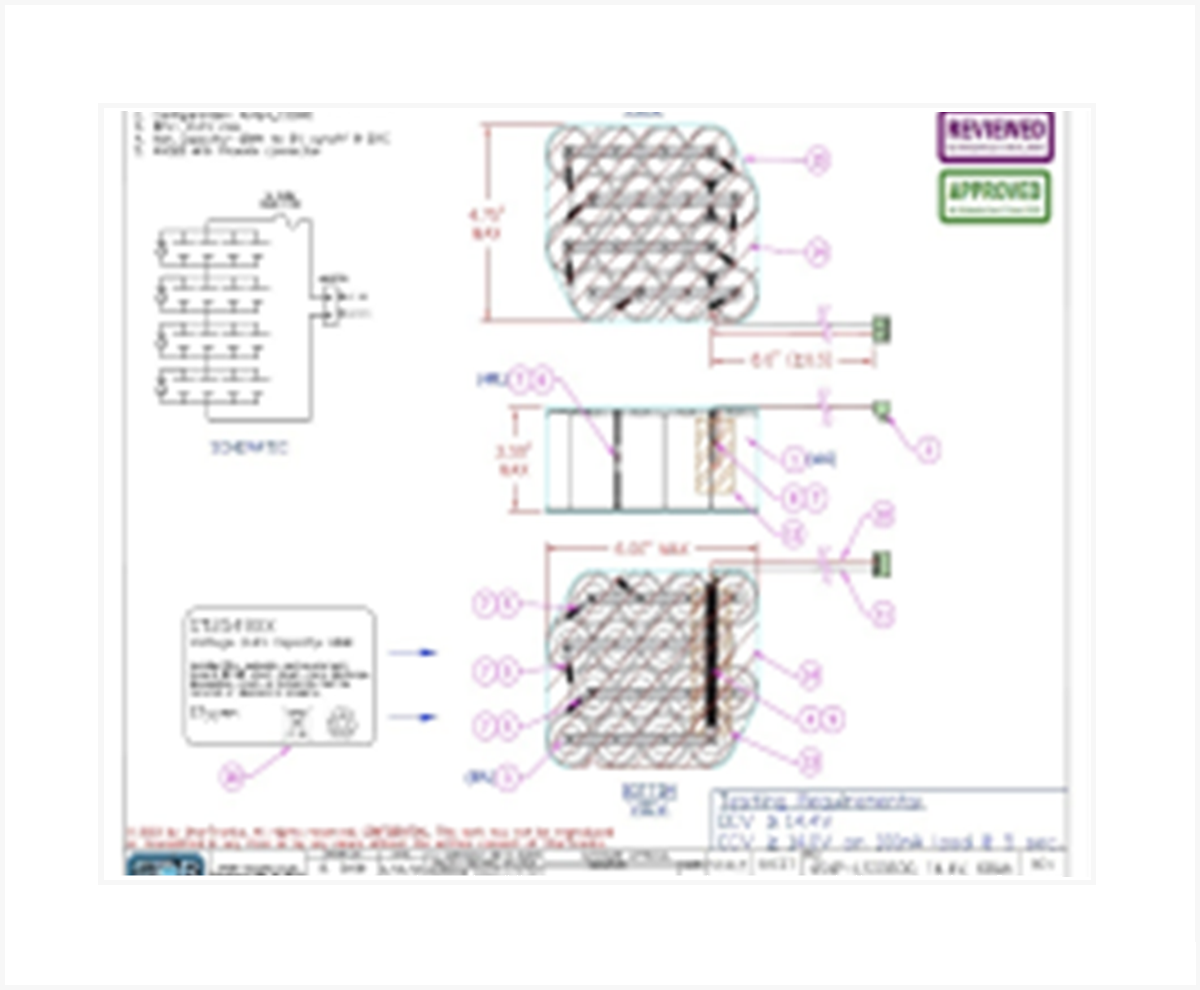Custom Batteries, OEM Battery Packs: Benefits and Processes
At StorTronics, we specialize in designing and assembling custom battery packs tailored to meet the unique power requirements of our clients across industries including medical, military, and industrial manufacturing. Whether you need a primary or rechargeable (secondary) battery solution, our engineering team delivers battery packs that ensure performance, reliability, and compliance.

Benefits of Custom Battery Assemblies
Optimized Performance
Our custom battery packs are engineered for precise voltage, current, and capacity requirements, ensuring peak device performance and longer lifespan.
Space and Weight Efficiency
Tailored battery designs allow for compact, lightweight configurations that perfectly fit within your product dimensions.
Enhanced Reliability
Using top-quality components and stringent testing protocols, we deliver battery solutions you can trust—even in mission-critical environments.
Regulatory Compliance
We design and test our battery packs to meet industry standards, streamlining your path through regulatory and safety certifications.
Featured Custom Battery Pack Examples
GE Fanuc
A98L-0031-0025
6V battery pack designed for CNC machinery and robotics applications
Delivers stable voltage with excellent cycle life
A98L-0031-0011-L
3.6V Lithium battery for Fanuc controllers
Compact and reliable with long shelf life
Okuma
E5503-867-001
3.6V Lithium battery used in CNC and factory automation systems
High energy density for extended equipment uptime
E8049-090-012
Reliable custom battery pack for specialized machine tool controls
Durable construction for industrial environments
E5503-07E-001
Long-life lithium solution for Okuma CNC equipment
Designed for consistent performance and longevity
Motoman
149689-1
Custom battery pack for Motoman robotic arms
Provides reliable power to maintain memory and control settings
142189-1
High-performance battery for automation and robotics
Engineered for durability in demanding conditions
479348-2
Replacement battery pack for Motoman systems
Compact and robust with easy integration
Our Custom Battery Pack Development Process
1. Consultation
We begin with a detailed consultation to understand your product’s power needs, environmental conditions, and regulatory requirements.
2. Design & Engineering
Our in-house engineers develop optimal battery configurations using the right chemistry, size, and components for your application.
3. Prototyping
We build functional prototypes so you can test and validate performance before moving to production.
4. Testing & Quality Assurance
Each battery pack undergoes comprehensive electrical and safety testing to meet your standards and regulatory expectations.
5. Production & Delivery
Upon approval, we manufacture and deliver high-quality battery packs with consistent performance and full traceability.
Ready to Build Your Custom Battery Solution?
Contact our team today to start your custom battery pack project. Use our custom battery design forms for both primary and secondary packs, or get in touch with one of our engineers to discuss your application in detail.
[Contact Us] [Primary Battery Design Form] [Secondary Battery Design Form]

